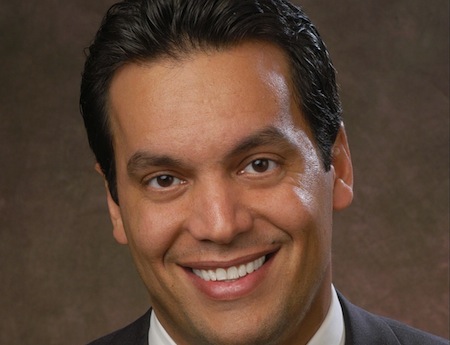CBS’ Ianniello Says Shift To C7 Rating ‘Makes Sense’

A top CBS executive crowed about an agreement with GroupM to do ad deals using the C7 measurement scheme, but other media buyers said the deal wouldn’t affect their willingness to shift from the old measurement system.
Speaking at the Bank of America Merrill Lynch Global Telecom and Media Conference Tuesday morning, CBS COO Joe Ianniello acknowledged reports that CBS had an agreement with the biggest media agency to do deals based on C7, which includes more viewers watching ads on a delayed basis.
“I think that [C7] is now going to become the standard. It only makes sense,” Ianniello said. “There is significant viewership outside of the first three days, and we think it’s fair that we get paid for it. I think you’re going to see more and more of these types of deals.”
Ianniello reiterated CBS’ estimate that counting more delayed viewing represented a “nine-figure” revenue opportunity.
Ianniello declined to say what CBS gave up in exchange for GroupM agreeing to go with the measurement the networks prefer. “Let’s start with measurement. Then we’ll have a negotiation like we do every year about price,” he said. “But let’s at least count the eyeballs from if you’re watching it on this device or this device in three days or four days. If it’s being consumed, let’s put it in a pot and let’s aggregate it and say what it’s worth. As long as there’s a marketplace out there, it will find its equilibrium.”
Despite GroupM shifting to C7, the top negotiators and other major agencies said they still expected to do the bulk of their deals on C3. C3 counts three days of delayed viewing on DVRs and VOD. C7 counts seven days.
“Our stance remains as it has been,” said John Nitti, president, activation, at Zenith. “We have certain clients that will entertain C7 for an advantage and a large subset of clients where C7 makes no sense due to the close-in promotional nature of their messaging.”
Broadcasting & Cable Newsletter
The smarter way to stay on top of broadcasting and cable industry. Sign up below
Other senior buyers said they expect C3 to be the dominant currency this upfront, but preferred not to be identified.
In a research note, Todd Juenger, senior analyst at Sanford C. Bernstein, said that while the stock market sees the change to C7 as a positive for media companies, he believe the revenue impact will be negligible.
Juenger argues that the change does not increase total ad spending, but will slightly increase the share of that spending going to the broadcast networks. And because most media companies own most cable networks, it’s a wash at best, except for CBS, which has the most-viewed broadcast network and minimal cable ad revenue.
Ianniello said that the switch to C7 will highlight the disparity in viewing between CBS and its cable competition. “We have shows that millions and millions of people are watching on the fourth day and thereafter that we’re generating zero revenue,” he said at the conference. “That just doesn’t make sense to me. And that part would be a massive hit on many, many, many cable networks.”
He said that CBS would be focusing on generating ad dollars by using C7 for ad buys of primetime programming, or if some advertisers want to stick to C3, by selling those delayed impressions using dynamic ad insertions. “You bet we’re going to be focused on that because those are very high margin dollars.”
Juenger added that the measurement shift could be beneficial for the TV in the long run.
“There is one other benefit to C7, which is keeping CPM’s marginally lower, thereby keeping TV advertising that much more cost competitive relative to alternatives (especially online video advertising). Over time, especially as VOD and other advertising supported on-demand viewing is also credited in the currency rating, the lower cost may prove to be the most important impact of more inclusive ratings definitions,” Juenger said.
Jon has been business editor of Broadcasting+Cable since 2010. He focuses on revenue-generating activities, including advertising and distribution, as well as executive intrigue and merger and acquisition activity. Just about any story is fair game, if a dollar sign can make its way into the article. Before B+C, Jon covered the industry for TVWeek, Cable World, Electronic Media, Advertising Age and The New York Post. A native New Yorker, Jon is hiding in plain sight in the suburbs of Chicago.










